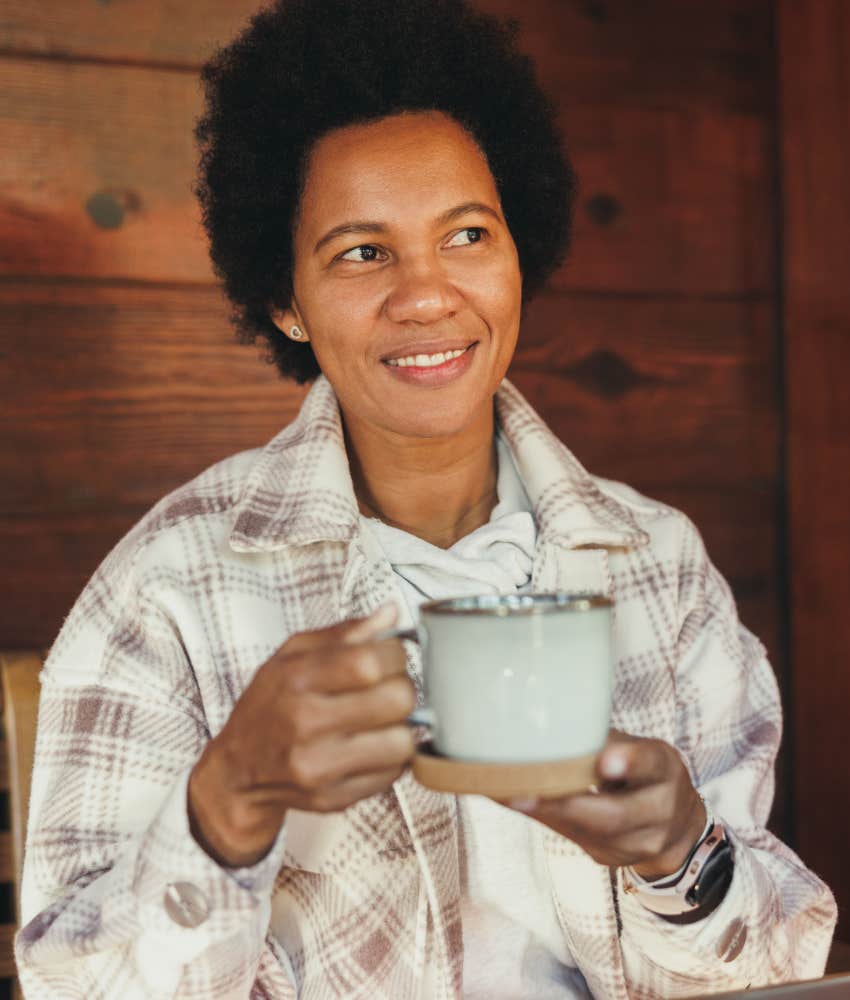The Art Of Gratitude: 5 Simple Habits Of People Who Appreciate Life
Gratitude is a joyful practice, not something you pressure yourself to do.
 İsmail Efe Top | Unsplash
İsmail Efe Top | Unsplash When gratitude is promoted, does it only bring up how ungrateful you feel? When people wish you joy and peace, do you feel puzzled if you're surrounded by chaos and stress? Does it make you feel guilty that you're not more grateful?
If you're a skeptic, it's easy to roll your eyes and wonder how being grateful for having heat, a healthy meal, or running water will help you deal with the meeting at 8 am sharp. However, here's the thing: numerous studies have shown that a gratitude practice has benefits for your health and relationships.
Here are 5 simple habits of grateful people who appreciate life:
1. They allow themselves to fully feel gratitude, not just think about it
For me, it feels like for a moment, everything in the world is OK and right. There is a warmth that washes over me with a feeling of contentment.
- What does it feel like in your body when you are content in the moment?
- Do your shoulders relax?
- Does your stomach stop doing backflips?
Identify the feeling in your body and then do the next thing.
2. They spot small blessings as they go out about their day
 MilanMarkovic78 via Shutterstock
MilanMarkovic78 via Shutterstock
For me, these are fleeting but amazing moments that I string together to build my gratitude practice, like Holiday lights on a wire, they are strung together to make something beautiful. A study of gratitude practices found "people typically consider gratitude a virtue and not simply a pleasure points to the fact that it does not always come naturally or easily. Gratitude must, and can, be cultivated."
For me, the moments that stand out and produce the aforementioned feelings are:
- When I see something stunning in nature, like a sunset, a beautiful array of clouds, when snow has fallen and everything is quiet, the way the sun makes the ocean water sparkle...I know I feel grateful because I want to store that image in my mental photo album.
- Parenting joy: When I see my son asleep in his bed, looking totally at peace, or when I see him improve or master a task he's been working on, there is nothing like that feeling for me.
- Professional successes: The minutes or hours when things are clicking and progress is being made, I feel truly alive, effective, and honored to help others make strides to improve their lives.
- Personal triumphs: The feeling when I finish a hard workout that is high on my list, and the feeling after finishing a difficult assignment in graduate school.
These are a few of the categories that stand out strongly for me, where I really feel those physical components of gratitude, where I want to relive the experience.
3. They track the moments when they feel most grateful
With our phones being so handy, you can even make a gratitude photo album on your phone to remind you of these moments in which you have gratitude. Some people have a gratitude journal, but that may feel forced or corny.
Do it if you want, but if it doesn't feel good for you, don't. It's a trial-and-error thing, and that is fine! Something that worked in the past may not work now, or vice versa.
How else could you track the moments you want to relive? The moments you try to repeat or re-experience? For me, that's when I most notice and enjoy my gratitude.
Here are some other ways to track:
- A gratitude jar (put slips of paper in and watch the stack grow)
- Voice record your moments on your phone
- A photo journal, as stated above
- Self-reflection time during your day
- A Pinterest board
- A scrapbook
- A regular conversation with a loved one or friend
- A "thank you" note to someone
4. They understand gratitude looks different for everyone
 AYO Production via Shutterstock
AYO Production via Shutterstock
There is no right or wrong way to "do" gratitude. Find what feels right for you. It doesn't have to be like everyone else. It needs to fit you and work for you so you can reap the benefits of your own practice.
Give yourself time to connect with your body in those joyful moments to record what you feel in your body when your mind is happy or content. Research on the effects of gratitude exercises "revealed that a gratitude exercise decreased depressive symptoms among participants high in such symptoms at baseline and eliminated the negative effect of low baseline trait gratitude on later happiness, positive emotions, and depressive symptoms."
Plus, as I've said before, what you focus on expands. When you integrate this practice, you start looking for these moments. Then you start feeling them more, and so on. It's a self-fulfilling positive feedback loop. You just have to start. It doesn't have to be perfect.
5. They enjoy the good days without expecting every day to be one
Relinquish that expectation so you can let go of your resentment. Being "happy" is a condition that we think we need to chase to feel like we are living our lives right, and once we arrive, everything in our lives will be good.
We won't have to worry, suffer, or try so hard. You fill in the blank. But that's not how life is, nor is it realistic. Life is full of ups and downs.
We want to really focus on the ups and put an individual twinkle light on each. Look for the ups, look for those joyful moments. No one else may notice them but you. That is fine. The more lights you string together, the brighter your gratitude practice is. It builds on itself.
Here's the thing: if you practice gratitude, your happiness may not be conditional upon accomplishing those often elusive goals. Brené Brown explains that those who live a wholehearted life (believe they are enough, no matter how productive they are, and have the courage to be imperfect) have a gratitude practice. When you don't expect your life to be shining like the sun 24/7, you will appreciate the moments when it is. There is your gratitude.
Anya Surnitsky is a licensed clinical social worker and a Certified Daring Way™ Facilitator. She has been featured in PsychCentral, the Unapologetically Sensitive podcast, TherapyDen, and more.

